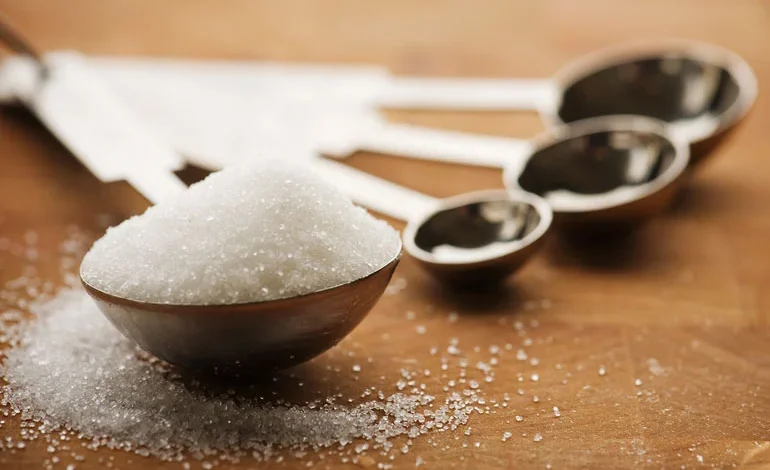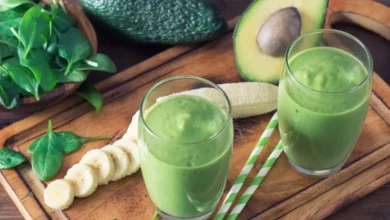Breaking the Sweet Shackles: A Guide to Overcoming Sugar Addiction

In a world filled with sweet temptations at every turn, breaking free from the clutches of sugar addiction can feel like an uphill battle. Sugar, though delightful to the taste buds, can wreak havoc on both physical and mental well-being when consumed in excess. But fear not, for with dedication and a strategic approach, it is entirely possible to kick the sugar habit and embrace a healthier lifestyle.
Understanding Sugar Addiction: The Culprit Within
Before embarking on the journey to sugar freedom, it’s essential to understand the nature of sugar addiction. Sugar, particularly the refined and processed varieties, has been shown to trigger the release of dopamine in the brain—a neurotransmitter associated with pleasure and reward. Over time, this creates a cycle of dependence, as the brain craves more sugar to experience the same pleasurable sensations.
Moreover, sugar consumption can lead to spikes and crashes in blood sugar levels, contributing to feelings of fatigue, irritability, and cravings. Breaking free from sugar addiction involves not just a physical detox but also addressing the psychological aspects of the habit.
Step 1: Awareness and Acceptance
The first step in overcoming any addiction is acknowledging its presence and accepting the need for change. Take a moment to reflect on your sugar consumption patterns, identifying the sources of excess sugar in your diet. This includes not just obvious sources like sweets and sodas but also hidden sugars in processed foods, sauces, and condiments.
Once aware, approach the journey with a positive mindset. Understand that overcoming sugar addiction is a gradual process, and setbacks may occur. Embrace the challenge with determination, knowing that every step towards reducing sugar intake is a step towards a healthier you.
Step 2: Educate Yourself
Knowledge is a powerful tool in the battle against sugar addiction. Familiarize yourself with the various types of sugars, both natural and added, and learn to decipher food labels. Often, sugar hides under aliases like sucrose, high fructose corn syrup, or agave nectar. Being able to identify these hidden sugars empowers you to make informed choices while grocery shopping.
Additionally, educate yourself on the detrimental effects of excessive sugar consumption. From weight gain and increased risk of chronic diseases to the impact on mental health, understanding the consequences can serve as a powerful motivator to kick the habit.
Step 3: Gradual Reduction
Cold turkey may work for some, but for many, a gradual reduction in sugar intake is a more sustainable approach. Start by cutting back on obvious sources of added sugars, such as sugary beverages, candies, and desserts. Replace these with healthier alternatives, like fruit or unsweetened snacks.
Simultaneously, reduce the amount of sugar you add to your beverages or food. If you’re accustomed to multiple spoons of sugar in your coffee, try cutting it down gradually until you can enjoy it without any added sweetness. Small, incremental changes make the adjustment more manageable and increase the likelihood of long-term success.
Step 4: Opt for Whole Foods
As you reduce your reliance on processed foods, shift towards a diet rich in whole, unprocessed foods. Fruits, vegetables, lean proteins, and whole grains should form the foundation of your meals. Not only are these foods nutritious, but they also contain natural sugars accompanied by fiber, which helps regulate blood sugar levels and provides a more sustained release of energy.
Whole foods also tend to be more filling, reducing the likelihood of succumbing to sugar cravings. Experiment with different recipes and cooking methods to make whole foods a delicious and integral part of your daily diet.
Step 5: Stay Hydrated
Dehydration can often be mistaken for hunger or sugar cravings. Ensure you stay adequately hydrated throughout the day by drinking plenty of water. Sometimes, a glass of water can be the remedy for a craving. Consider infusing your water with natural flavors like lemon, cucumber, or mint to make it more enticing.
Step 6: Balance Your Meals
Creating balanced meals that include a mix of carbohydrates, proteins, and healthy fats can help stabilize blood sugar levels and curb sugar cravings. Aim for meals that provide sustained energy and keep you satiated for longer periods. Experiment with different combinations to find what works best for your taste preferences and nutritional needs.
Step 7: Find Healthy Alternatives
Satisfying your sweet tooth doesn’t have to mean succumbing to refined sugars. Explore natural sweeteners like honey, maple syrup, or stevia as alternatives to processed sugar. While moderation is key, these alternatives can provide a hint of sweetness without the negative health impacts associated with excessive sugar consumption.
Additionally, incorporate naturally sweet foods into your diet, such as berries, mangoes, or sweet potatoes. These options can fulfill your sweet cravings while offering nutritional benefits.
Step 8: Manage Stress and Emotional Triggers
For many individuals, sugar becomes a coping mechanism for stress or emotional challenges. Identifying and addressing these triggers is crucial in breaking the cycle of emotional eating. Explore stress management techniques such as meditation, exercise, or counseling to develop healthier coping mechanisms.
Step 9: Seek Support
Embarking on the journey to overcome sugar addiction can be challenging, but you don’t have to go it alone. Seek support from friends, family, or join online communities where individuals share their experiences and strategies. Having a support system can provide encouragement, accountability, and valuable insights.
Step 10: Celebrate Progress
Celebrate the milestones, no matter how small. Whether it’s a week without added sugars or successfully resisting a sugary treat, acknowledge and reward yourself for the progress made. Positive reinforcement can reinforce healthy habits and motivate you to continue on your sugar-free journey.
Conclusion:
Leaving behind sugar addiction is a transformative journey that requires commitment, self-awareness, and a holistic approach. By gradually reducing sugar intake, opting for whole foods, and addressing the emotional aspects of the habit, you can break free from the sweet shackles that may be holding you back. Remember, it’s not about perfection but progress. Celebrate each step forward and embrace the positive changes that come with reclaiming control over your relationship with sugar. Your body and mind will thank you for it.



